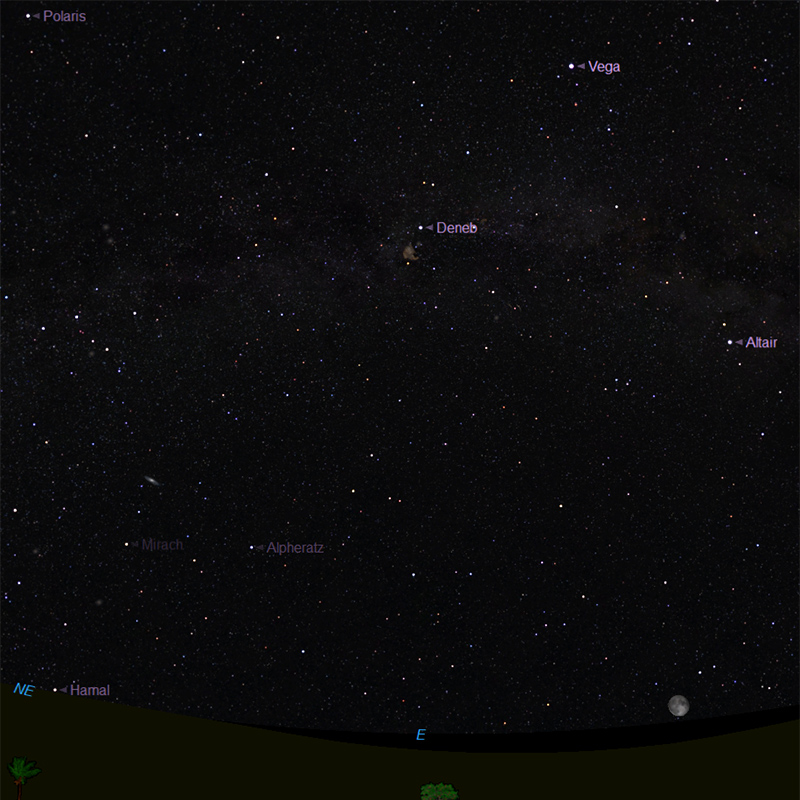A Cygnus Triple

This triple consists of a golden 4th magnitude star, Omicron (also called 31 Cygni) widely separated from its bluish white, 4.8 magnitude companion (30 cygni).
If you have trouble seeing their colours, try defocsuing your binoculars slightly, as this spreads out a star's light and makes subtle hues easier to see.
Almost lost in the glow is the system's third member, a 7.0 magnitude sun that displays no distinct colour.
Facts about this Cygnus Triple by Keith Turnecliff
Although binoculars and double star observing are not often thought of together, some of the sky's best pairs are suitable binocular targets.
Steadily held 10 x binoculars will show all three, but a lessser magnification will have a harder time separating the stars.
Interestingly the above image also shows the North American Nebula, but it may be visible in clear conditions and appears as a fuzzy patch.
The shape and colour can only be seen in photographs.

This star chart for represents the view of the Cynus Triple from Long Itchington in early August at 10pm.
Credits: Images courtesy of Starry Night Pro Plus 8, researched and implemented by Keith Turnecliff.
The inset image shows a close up of the area for which you are looking.